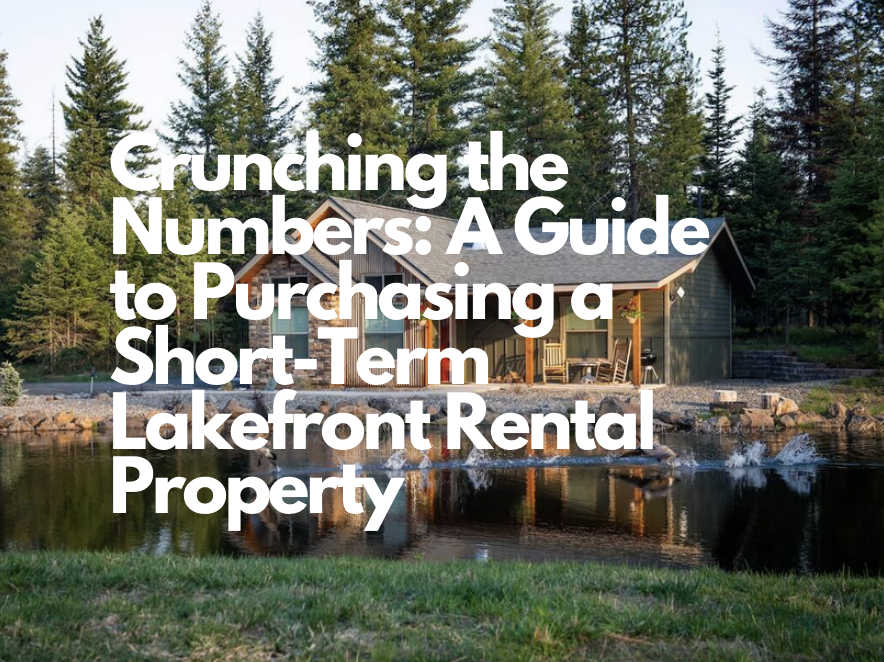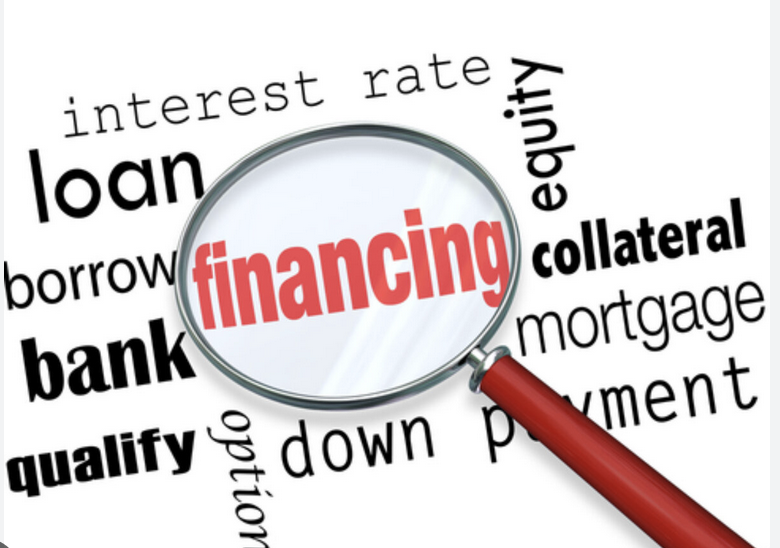
Investing in a short-term lakefront rental property can be an exciting venture, offering the potential for lucrative returns and the opportunity to own a slice of waterfront paradise. However, before diving into such an investment, it’s crucial to understand the financial aspects involved. From assessing the property’s potential rental income to factoring in expenses and evaluating profitability, doing the math is essential for making informed decisions. In this guide, we’ll walk you through the key steps and considerations involved in crunching the numbers when purchasing a short-term lakefront rental property.
Researching the Market
Before you even start calculating numbers, it’s vital to conduct thorough market research. Understand the demand for short-term lakefront rentals in the area you’re considering. Look into factors like tourism trends, seasonality, and local attractions that could affect rental demand and rates. Websites like Airbnb, VRBO, and local vacation rental agencies can provide valuable insights into rental rates, occupancy rates, and property listings in the area.
Estimating Rental Income
One of the primary considerations when purchasing a short-term rental property is the potential rental income it can generate. Start by analyzing comparable rental properties in the area to get an idea of average nightly rates and occupancy rates throughout the year. Consider peak seasons, holidays, and special events that may command higher rates and occupancy.
Once you have a rough estimate of the property’s rental income potential, factor in vacancy rates and potential downtime for maintenance and renovations. It’s crucial to be conservative in your estimates to account for fluctuations in demand and unexpected expenses.

Calculating Expenses
Owning and operating a short-term lakefront rental property comes with various expenses that need to be factored into your financial calculations. These expenses may include:
- Mortgage Payments: If you’re financing the property with a mortgage, include monthly mortgage payments in your calculations.
- Property Taxes: Research local property tax rates to estimate annual property tax expenses.
- Insurance: Property insurance for lakefront properties may be higher due to increased risk of damage from water-related incidents. Obtain insurance quotes to include in your expense calculations.
- Maintenance and Repairs: Budget for ongoing maintenance, repairs, and occasional renovations to keep the property in top condition.
- Utilities: Include expenses for utilities such as electricity, water, sewer, and trash removal.
- Property Management Fees: If you plan to hire a property management company to handle bookings, guest communication, and maintenance, factor in management fees.
- HOA Fees: If the property is part of a homeowners association (HOA), include monthly or annual HOA fees.
- Furnishing and Amenities: If the property is unfurnished or requires additional amenities to attract guests, budget for furnishing and outfitting expenses.
Assessing Cash Flow and Return on Investment (ROI)
Once you have estimated rental income and calculated expenses, you can determine the property’s potential cash flow and ROI. Cash flow is the net income generated by the property each month after deducting all expenses, while ROI measures the return on your investment relative to the property’s purchase price.
To calculate cash flow, subtract total monthly expenses from total monthly rental income. A positive cash flow indicates that the property generates more income than it costs to operate, while a negative cash flow means expenses exceed income.
ROI can be calculated using the following formula:
- ROI = (Net Annual Income / Total Investment) x 100
Net Annual Income is the property’s annual rental income minus annual expenses, and Total Investment includes the property purchase price, closing costs, and any upfront renovation or furnishing expenses.
A higher ROI indicates a more favorable investment, but it’s essential to consider other factors such as appreciation potential, tax benefits, and personal investment goals.
Factoring in Financing Options and Interest Rates
If you’re financing the purchase of the lakefront rental property with a mortgage, consider how different financing options and interest rates will affect your overall expenses and cash flow. Shop around for competitive mortgage rates and terms, and calculate mortgage payments based on different loan scenarios.

Keep in mind that a higher down payment can lower your monthly mortgage payments and overall interest costs, but it will also require a larger initial investment. Conversely, a lower down payment may result in higher monthly payments and interest costs but requires less upfront capital.
Assessing Risk and Mitigating Factors
As with any investment, purchasing a short-term lakefront rental property involves inherent risks. Market conditions, natural disasters, changes in local regulations, and unexpected maintenance issues can all impact the property’s performance and profitability.
To mitigate risk, consider diversifying your investment portfolio, maintaining adequate insurance coverage, and setting aside reserves for emergencies and unexpected expenses. Conduct thorough due diligence, including property inspections and legal reviews, to identify any potential issues before finalizing the purchase.
Seeking Professional Advice
Navigating the complexities of purchasing a short-term lakefront rental property can be challenging, especially for first-time investors. Consider seeking advice from real estate professionals, financial advisors, and tax professionals who specialize in real estate investments. They can provide valuable insights, help you analyze investment opportunities, and ensure you make informed decisions aligned with your financial goals.
Conclusion
Purchasing a short-term lakefront rental property can be a lucrative investment opportunity, offering both financial returns and the satisfaction of owning a desirable vacation destination. However, success in this endeavor requires careful financial planning, thorough market research, and a solid understanding of the numbers involved.
By researching the market, estimating rental income, calculating expenses, assessing cash flow and ROI, and factoring in financing options and risk mitigation strategies, you can make informed decisions and maximize the potential returns on your investment. Remember to seek professional advice when needed and conduct due diligence to ensure a successful and profitable investment in your lakefront paradise.
Posted by Scott Freerksen “The Lake Guy”
